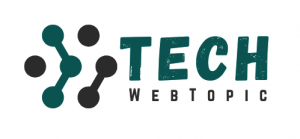When it comes to managing business processes, conversing with customers and potential customers, and providing services, information technology continues to be a significant barrier for businesses. Even though no single reorganization strategy is dominant, common company structures tend to decentralize IT, bring it closer to end-users and integrate the knowledge base with business strategy. Aligning business and IT is critical for market impact and growth.
As business objectives shift, IT will respond faster with the solutions required to support and maintain enterprise momentum. As a result, technological advancements are integral to ongoing and prospective strategies and initiatives. The traditional question of “Which department do you work in?” has given way to “How do you work?” as flexible organizational structures give way to working ecosystems.
Defining Business-IT Alignment
Business-IT alignment is the process of efficiently and effectively adopting, integrating, implementing, and managing information technology (IT) resources to achieve desired business situations, objectives, and goals. Hardware, software, resources, and cloud-based services are all examples of IT assets.
Business-IT alignment is crucial for any modern business, especially as most companies move from traditional business models to new ones that emphasize process digitization and enterprise-wide cloud adoption. According to Gartner, business-IT alignment is slowly becoming a priority, with 50 percent of companies expecting more collaboration between business teams and IT departments by 2022.
The Advantages of a Successful Business-IT Alignment
In terms of IT alignment with business goals, an enterprise is considered successful when its IT initiatives meet all of the requirements specified by its business functions. Company A, for example, migrates its major business processes to the cloud to improve efficiencies, reduce operational costs, and accelerate growth—all while adhering to a strict timeline. When all targets are met, this is considered a successful alignment of business goals and IT investment.
According to this alignment, every dollar spent on IT should always support a business goal. Some of the benefits of a successful alignment are as follows:
- Information technology costs are decreasing.
- Increasing the worth of IT assets in terms of operational value
- As a result of improved collaboration, there is greater visibility and monitoring of problem areas.
- Investment optimization that results in a higher return on investment
- Getting a product to market faster is becoming increasingly important.
- Departments synchronize, resulting in collective agility.
- Upskilling other employees will provide them with valuable industry knowledge.
- Making better choices
Why is Alignment of Business and IT a Strategy?
Businesses perform better, generate more profit, and generate a higher return on investment due to this continuous strategic loop because they accomplish their objectives with less effort. An organization’s agility and operational efficacy can be improved by various approaches to effectively reconciling IT and business strategy.
Indeed, because this synergy is critical, successful businesses dive deeper. Amazon and Apple are prime examples—their operational structures are, of course, integrated and aligned with technology. They developed the underlying technology and business strategies in some cases themselves!
You can position your business and IT alignment strategies by following these four steps:
- Transform business objectives into quantifiable IT services to allocate resources efficiently to maximize revenue and return on investment. This step requires ongoing communication between business and IT leaders.
- IT must understand business requirements and ensure that mission-critical systems are implemented.
- Use a systematic approach to the project. IT must serve as a single point of contact for all service requests to meet the organisation’s needs.
- Increased cross-organization visibility and service level commitments – While metrics are critical, IT must ensure that the data they collect has a business context and that the measured parameter has a clear relationship to business goals.
Challenges and Opportunities in Alignment
Why is achieving business-IT alignment so tricky? Even though information technology is critical to any business, some executives treat it as an afterthought. Business and IT teams are two separate departments that can find it difficult to collaborate in the middle. Sometimes, business leaders are unaware of their IT resources and capabilities. Meanwhile, IT departments place far too much emphasis on IT-related metrics to support their recommendations, neglecting to consider the overall business objectives.
The COVID-19 crisis exemplifies how business and IT can become misaligned. Companies were under pressure to accelerate and implement cloud initiatives as quickly as possible, with little thought to align their IT investments with their objectives. As a result, the gap between business and IT grew wider. 80% of companies have already discovered that their cloud spending exceeded their expectations; after COVID, this number is likely to rise even more.
This alignment can be difficult for a variety of reasons:
Infrastructure bottlenecks
Because most of the C-suite is unfamiliar with IT, they are unaware of how IT systems add value. They are unable to quickly identify which IT solutions are best suited to their business requirements, and as a result, they frequently purchase IT assets that do not meet their needs.
Change Resistance
CIOs must persuade upper management to support IT-business alignment. On the other hand, mutual leadership and shared accountability between business leaders and IT departments are critical components of a successful business-IT alignment strategy. CIOs must hold IT accountable, and IT must hold CIOs responsible.
Achieving Strategic Agility
Business-IT alignment is dependent on an organization’s current IT requirements and business goals. In today’s business environment, IT requirements are constantly changing. Business and IT teams must be agile to consistently meet business goals, regularly revisit existing IT strategies and revise IT frameworks.
Balancing Conflicting Roles
The second most important priority for modern CIOs (44 percent) is aligning business objectives with IT, followed by security management (45 percent) and IT operations/systems performance (14 percent) (42 percent ). CIOs are now leading the transformational activities, a significant shift from their previous position. Their responsibilities have shifted from optimizing IT infrastructure to revenue generation and innovation. CIOs must strike a balance between traditional and transformational approaches to ensure successful business-IT alignment.
Overcoming these challenges will pay off handsomely in the long run for those who persevere.
Is Alignment Enough, or Do We Also Need Convergence?
Many doubts arise whether IT and business alignment are enough to improve cloud and cloud security. If taken at face value, alignment may imply that the two entities remain separate but collaborate. Another concept is convergence, which means that the teams work together to form a true union.
IT and business units merge when they converge or integrate. An example of this would be a business that has separate teams for information technology (IT), sales (Sales and Marketing), and product development (PD). Your company can be fully committed to Agile and DevOps principles.
These aligned companies have risen technology investment efficiency and lower business and technological switch operating and financial risks.
However, if the rate of change and business flux is as rapid as we claim, we should be discussing convergence and integration rather than just alignment. In other words, let us conduct research and learn and empower next-level thinking to concentrate on co-creating “true value” and responding more quickly to customers and users.
Without this granular strategy, businesses risk spending excessive amounts of money on technology without ever resolving the business challenges caused by disparate departmental objectives, cultures, and incentives. Put, business and IT alignment align technology with an organization’s strategy, mission, and goals.
Hiring specialized business relationship managers (BRMs) who can liaison between various groups to develop and nurture relationships is one strategy for bridging the divide. Consider these employees to be ambassadors or diplomats, familiar with each skill set or team philosophy and assisting everyone who works with them in gaining an inside look to foster stronger relationships.
The Impact of Alignment on Cloud Success
Businesses continue to migrate in large numbers to the cloud. According to a recent Flexera study on cloud adoption, 93 percent of enterprises worldwide have adopted multi-cloud strategies. Many, on the other hand, are in a state of digital hibernation. If they are unable to connect the various new solutions they have implemented, they may only see partial or limited success.
Businesses are finding it difficult to keep track of the money they are spending on the cloud. Organizations’ ability to forecast their cloud spending accurately is harmed by the rapid rate at which they are adopting cloud technology.
According to the same Flexera study, businesses anticipate a 47 percent increase in cloud computing costs over the next year. Companies must now have a firm grasp on cloud forecasting and cost optimization.
By aligning your IT and business strategies, your organization can effectively develop more effective and efficient cloud strategies, allowing you to fully maximize your cloud budget.
Conclusion
A solid cloud strategy is required for successful cloud adoption. As part of developing a tactic, it is critical to align IT goals with desired outcomes. This type of alignment is now being prioritized by many forward-thinking technology departments and Chief Information Officers. We think now is a great way to look at how IT can help both end-users and companies.


